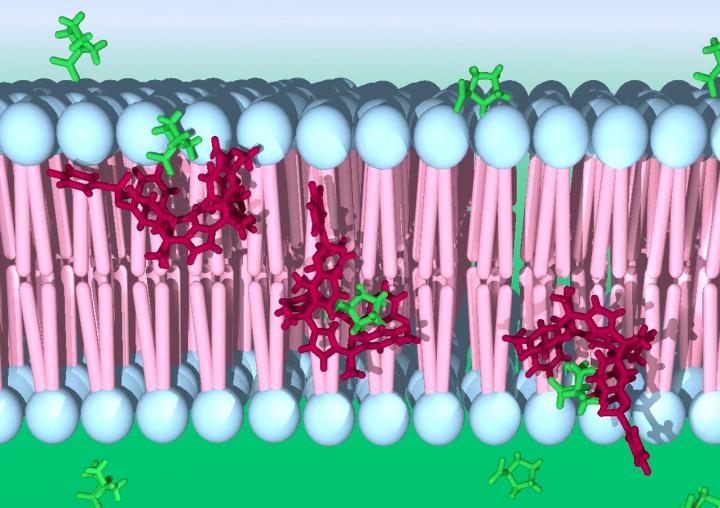
Credit: Gemma Aragay/ICIQ
The transport of amino acids and other molecules across the cell’s membrane plays a crucial role in the metabolism of cells and, therefore, in human health. Current research hints that cancer, cystic fibrosis, aminoacidurias and neurodegenerative diseases may stem from missing or defective amino acid transport at the cell membrane. Now, researchers from ICIQ’s Ballester group and IRBBarcelona’s Palacín group have published a paper in Chem showing how a synthetic carrier calix[4]pyrrole cavitand can transport amino acids across liposome and cell membranes bringing future therapies a step closer.
Thanks to the BIST Ignite project Calix[4]trans, the scientists have assessed the properties of a calix[4]pyrrole cavitand (a container shaped molecule) in the transport of amino acid Proline through cell and liposomal membranes. “The BIST Ignite project has allowed us to combine the fundamental research done in our lab focused on making molecules and studying their interactions with the more applied research done in Palacin’s group in the area of amino acid transporters and diseases. In my opinion, applied research must go hand in hand with basic research for a better understanding and advancement of science and the development of applications. In this case gaining knowledge about synthetic carriers for the long-term development of applications in the therapy of Proline-dependent diseases like some cancers and inherited hyperprolinemias” explains Gemma Aragay, scientific coordinator of ICIQ’s Ballester group.
Figure_pressreleasechemThe scientists made liposomes with the cavitand embedded in their membranes. They observed a 30-fold increase in L-Proline transport activity when compared with the passive diffusion of the amino acid to the interior of “regular” liposomes as well as the cavitand’s selectivity for L-Proline over other amino acids. “L-Proline is a suitable guest for the Calix[4]pyrrole cavitand because of the complementarity between the cavity’s size, shape and functional groups with those of the amino acid,” explains Aragay.
To study the impact of the cavitand on Proline transport in living cells, the scientists incubated synthetic vesicles infused with Calix[4]pyrrole in HeLa cultured cells to incorporate the cavitand in their membranes. The results obtained in cells reveal that the presence of the cavitand increases the diffusion of proline at high extracellular amino acid concentrations – although it represents a moderate increase when compared with the transport already carried out by the cells’ proteins.
However promising the results are, “we need to further study the molecular structure of the cavitand-amino acid complex to increase the transport activity if we want to apply Calix[4]pyrroles as therapeutic tools,” explains Pau Ballester, ICIQ group leader and ICREA professor.
“With this work, we hope to drive the development of artificial carriers to efficiently treat diseases of amino acid metabolism,” concludes Manuel Palacín, Head of the Amino Acid Transporters and Disease lab at IRB Barcelona, group leader at CIBER of Rare Diseases, and Professor at the University of Barcelona.
###
Media Contact
Berta Carreño
[email protected]
Original Source
http://www.
Related Journal Article
http://dx.




